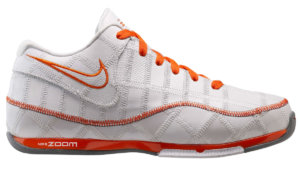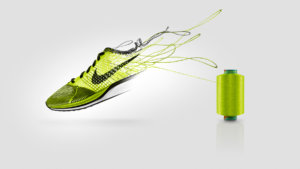Sustainability-Oriented Innovation: A Bridge to Breakthroughs
Research suggests that adhering to a tradeoff model in business constrains innovation.
Topics
Leading Sustainable Organizations
This blog post is the first in a four-post series on Sustainability-Oriented Innovation (SOI), offering a definition and overview of SOI. The series builds on Accelerating the Theory and Practice of Innovation by Jason Jay and Marine Gerard. Subsequent posts will explore different types of SOI and the different ways companies are using it, as well as the idea of SOI centers of excellence (CoEs) and SOI communities of practice (CoPs) to facilitate the establishment of those networks — topics we hope to further expand at MIT’s upcoming Sustainability Summit.
“Innovate or die” has become almost a mantra for companies in this era of rapid technological change and globalization. When we consider such conditions as extreme air pollution in Beijing, factory collapses in Bangladesh, drought in California, and deadly heat waves in India, the darker side of this foundational belief stands out in high relief. Yet we continue to settle for and cling to consumption-based business models that add to these global threats. Many large companies have survived and thrived for decades by selling high-calorie, sugary drinks or distributing apparel made by people working in extreme poverty for unfair wages in unsafe conditions.
Overcoming these challenges and enabling societies to thrive on a planet with increasingly finite resources will take significant innovation. We call this sustainability-oriented innovation (SOI).
SOI is about dispelling the notion of tradeoffs between what seem to be competing goals — performance versus impact, profit versus purpose, human wellbeing versus environmental protection. Our research suggests that when we no longer see these goals as competing, we create products, services, and business models that are holistic rather than fragmented. The potential for SOI exists within all firms. We just need to understand the barriers to unleashing it. Our research suggests that one critical barrier to achieving SOI is the “sustainability tradeoff” view of the world, a mental model that says having a positive social and environmental impact must exist as a tradeoff with more traditional business drivers.
Research Updates from MIT SMR
Get weekly updates on how global companies are managing in a changing world.
Please enter a valid email address
Thank you for signing up
Let’s look at Nike as an example of a company that discarded its tradeoff model. In the late 1990s, it started to develop an organizational commitment to environmentally responsible shoe design. One of its early forays into this work was the “Trash Talk” shoe, a shoe made from scraps of discarded material. The intended social value was to find a productive use for cutting-floor waste in the factories. Less waste meant using less energy, less water, and fewer chemicals.
But the shoe was a commercial failure. Customers did not find it aesthetically appealing, and Trash Talk did not have all the performance characteristics that Nike athletes had come to expect from their footwear. For Nike, succeeding with SOI meant holding firm to its commitments to both performance and impact. While Trash Talk had been a “compromise,” moving along the tradeoff line, they needed to push the envelope.
After an extensive search and invention process, Nike took a very different approach from the one they had been using. On the impact dimension, they sought to achieve zero waste on the cutting room floor, a standard that far exceeded any they had set in the past. On the performance dimension, they sought to make shoes lighter and more breathable. By committing to achieving both performance and impact, Nike had let go of its either/or approach. The result was Flyknit, a new technology that involved weaving the upper portion of the shoe from a single thread. They had learned what artists have long understood — that constraint generates innovation. For Nike, holding impact and performance constraints simultaneously led them to an entirely new way of producing athletic footwear.
By creating a new way to manufacture its popular running shoes, Flyknit produced what Nike CEO Mark Parker summed up as an innovation with “…the potential to change everything.” Flyknit is a mainstream product, marketed as a high-performance shoe. Its sales are projected to surpass $1B in 2016, which for a single shoe is an astounding accomplishment given Nike has an $18.3B total footwear business.
In our example, Flyknit hit the SOI sweet spot and tackled all three constraints simultaneously by creating customer value by increasing comfort and running performance; creating business value by cutting production time and costs, and addressing mainstream customer needs with significant market potential; creating system-wide environmental and social value by reducing landfill waste and reducing the need for labor-intensive, low wage work.
We know that successful SOI doesn’t occur in isolation but through collaboration. Dutch startup DyeCoo Textile Systems B.V. completely revamped Nike’s textile dyeing by using an entirely waterless process called ColorDry, which reduced water demand by 100-150 liters of water (26-40 gallons), reduced dyeing time by 40% and energy use by 60%, and reduced the factory footprint needed for production by 25%. DyeCoo’s technology was a game-changer.
While Nike Flyknit and DyeCoo ColorDry have both proven to be powerful technological innovations, SOI is not limited to cutting-edge technologies. It also has impact at the organizational, institutional and social levels.
Consider new intra-company “process” innovations like Buffer’s transparent salary bulletin and calculator, Tesla Motors’ “system infrastructure” changes like its international EV supercharging network, and Uber’s new “delivery and business model” innovation for car-sharing taxi alternative. These are all prime examples of the versatility of SOI across the organizational, institutional, and societal levels of innovation. They all work within different boundaries of change — from individuals to the inside of firms, firms to the inside of states, and states to the inside of society. In pursuing these bigger, more systemic solutions, SOI embraces a wide swath of commercial and civic stakeholders. Entrepreneurs, corporate intrapreneurs, policymakers, NGOs, investors, academics and active citizens all play a role in SOI success.
Embracing such diversity dispels the notion of single-player innovation and focuses instead on increasing opportunities for growth and scale through a multi-stakeholder approach. With this wider perspective and more diverse population of stakeholders, it becomes possible to tackle the big challenges more effectively and to be part of the solution that creates a positive future for business and society at large. In our subsequent blog posts, we explore the types of firms and strategies that can mesh with SOI, and the process of multi-stakeholder innovation.



Comments (2)
Jason Jay
sachiariel